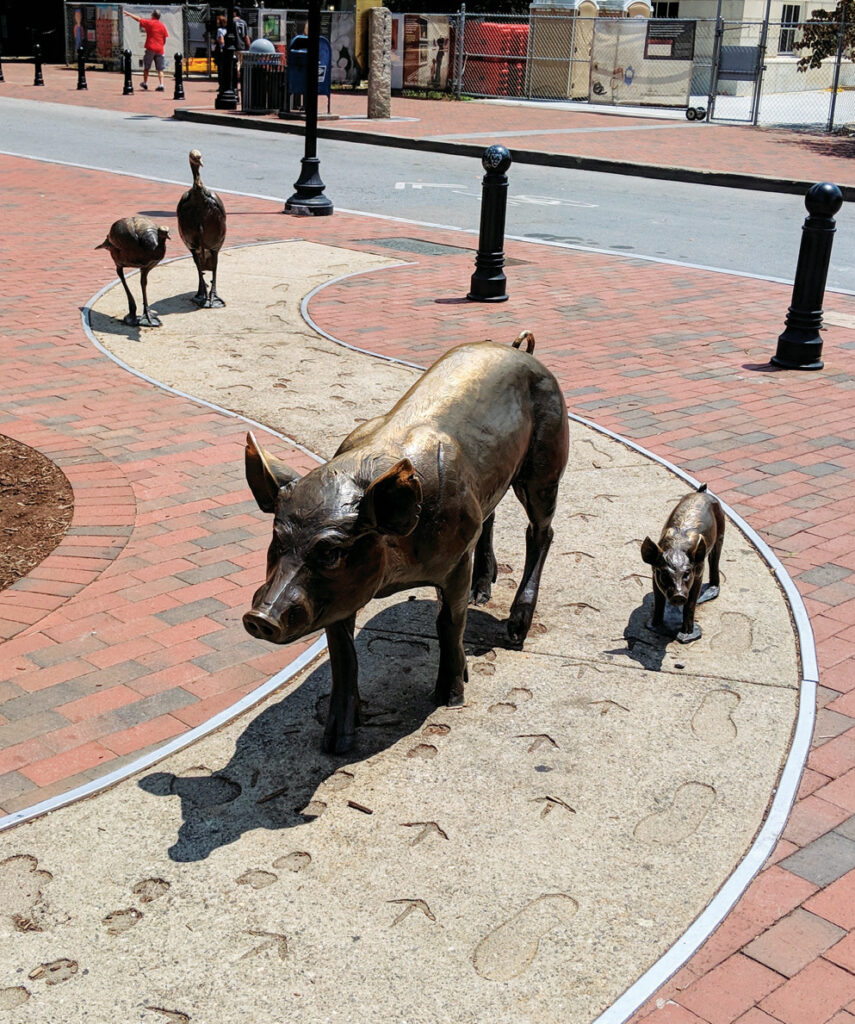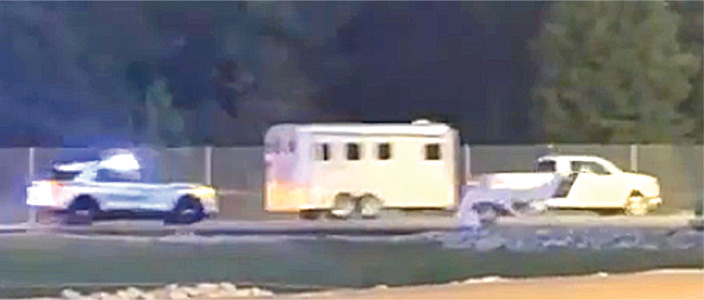
By Bill Carey
Forget football, at least for a moment. In Tennessee, which used to be known as the “Hog and Hominy State,” November used to be known as “hog droving” season.
Allow me to explain. Before the advent of the railroad, farmers used to herd (or “drove”) pigs, cattle, and other livestock to distant markets, journeys that would often take weeks.
Of all the roads leading out of Tennessee, the one that became most associated with hog droving was the one that led from Cocke County to Asheville, N.C., along the French Broad River.
This migration typically occurred in the late fall, after farmers had fattened their hogs with their surplus corn crop and before what was, and still is, known in agricultural circles as “hog killin’ time.”
There was a time when it was not unusual for travelers on the French Broad Road to be forced aside for half an hour or more to allow the noisy herds of hogs go past. In 1850, more than 80,000 hogs were driven on this route.
The 1851 Wilmington Daily Journal described the hog drovers of East Tennessee as a class of men who could perform incredible feats. “They are a species of human boa constrictor, never eating but once a day, and then swallowing at night from 10-16 cups of coffee, with biscuit and meat to match,” the paper reported. “We have met up in our time with some queer fish, but the East Tennessee hog-driver can take our hat.”
In 1878, the Winston-Salem People’s Press reported a verbal exchange that occurred in the courthouse in Marshall, N.C., one of the communities along the French Broad River. Attempting to conduct court on a November day, a judge ordered his clerk to do something to stop the incessant noise coming from outside.
“May it please your honor,” the clerk said, “it is impossible to stop that noise. It’s the hog-drovers.”
That same year, a traveler published his account of a journey down the French Broad Road in the Richmond Dispatch. “Hogs were before us and behind us, and both to the right and the left of us,” he wrote. “We were so constantly with them that we became critics of hogs. We became acquainted with each separate hog. We knew his movement, his color and his spots, nay, the very twist of his tail.”
Edmund Cody Burnett grew up in the French Broad Valley in the late 1800s and later wrote about his childhood. “As soon as a drove came through the gap in the ridge about a half mile distant across the river, we could hear the ‘ho-o-o-yuh! ho-o-o-yuh!’ of the drivers,” he wrote. “Sometimes we could hear the crack of their whips, both sounds increasing in volume at the schoolhouse as they drove drew nearer the ferry.”
Drovers typically moved their herds about 10 miles a day and spent the night at roadside inns that had fenced-in areas for their livestock. Drovers would pay their bill with one of their hogs, then head out first thing in the morning after a big breakfast.
Wilma Dykeman devoted an entire chapter of her 1955 book The French Broad to hog drovers. She wrote that each inn along the way had its own personality.
“There was the Widow Frisbee’s where the sauerkraut dipped out of the wide, cloth-covered crocks had the finest flavor of any on the trip; and the Fletcher tavern at the little North Carolina village of that same name, where the proprietor, a man of wide variety, was a doctor serving his area day and night running his farm and tavern, too,” she wrote.
“There was the Widow Patton’s, where apple brandy was manufactured at its government-licensed distillery, and a decanter called Black Betsy stood on the sideboard from which anyone might help himself free and welcome,” she elaborated.
So what happened to the culture of the hog drovers? It completely vanished in the 1880s, when a railroad was completed from one end of the French Broad Valley to the other. The annual herds stopped coming, the inns went out of business, and the word “drover” slowly slipped from the vernacular.
Bill Carey is the founder of Tennessee History for Kids, a non-profit organization that helps teachers cover social studies.



